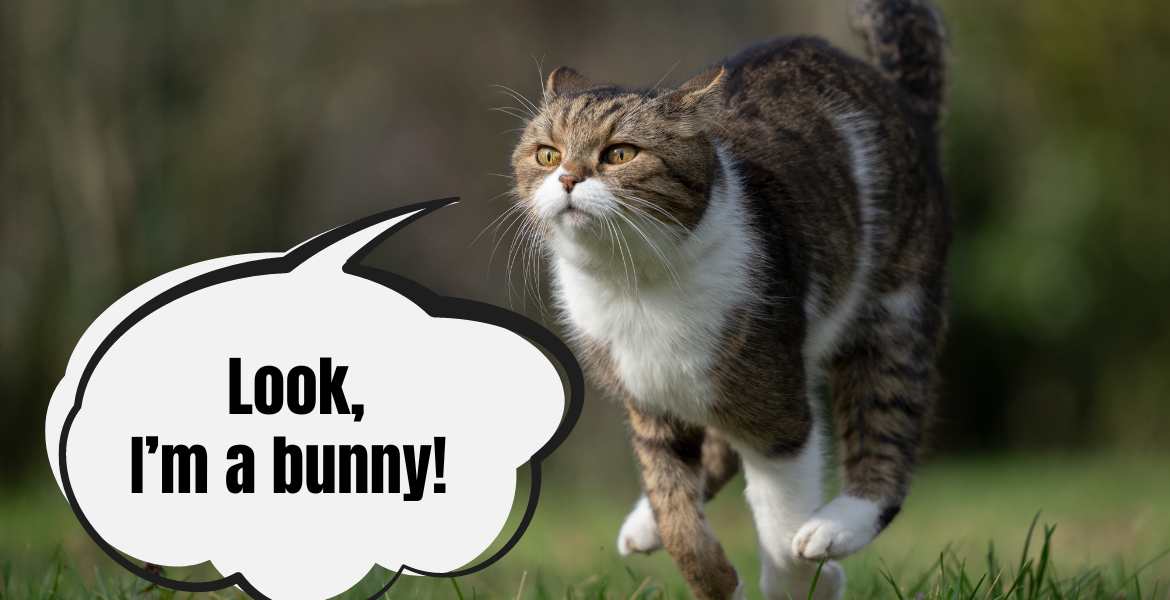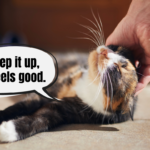If you read our blog regularly, you probably know, fabCat, how important it is to secure windows and balconies that your cats have access to. It doesn’t take much for a cat, driven by instinct, to leap after a nearby bird or fly. For us, as Cat Guardians, the safety of our furballs is crucial. But what to do if you have a bit more space in front of your house, and instead of a balcony, your cat can enjoy free access to the garden? Relaxing on the terrace, in a hammock, with a book and a cat by your side sounds like a dream, but how to do it safely? Today, we check how to effectively secure your home garden so that your cat can move freely within it. Stay and explore the topic with us, fabCat. 🙂
A Cat Garden Under Control
Domestic cats, provided with a well-equipped space, regular playtime, and a stable daily routine, can be perfectly happy never sticking their nose outside the door. But there are also those furballs bursting with energy from morning till night, who will eagerly take advantage of the opportunity to go outside and frolic in the garden. Climbing trees, napping in the grass, chasing flying insects, sniffing fresh flowers – there’s no boredom in the garden. If you have the space to allow your furballs such exploration, go ahead! The key is to ensure your cat is fully safe while doing so.
What do you need to remember, fabCat? When it comes to giving your cat free access to the charms of the outdoors, your worry is not just about building a fence that the cat won’t jump over. You must also consider ticks, stings, poisoning from plants dangerous to cats, falls from heights, and potential encounters with wild animals (and the diseases they may carry).
What Dangers Might Lurk in the Garden?
There are quite a few, and we certainly won’t be able to list them all, but among the most important ones to remember, pay attention to:
PLANTS. Just like with houseplants, when choosing flowers and plants for your garden, check if they are safe for cats. While at home you might have a chance to move a plant to a place where the cat won’t reach it, it’s harder to supervise your furball in the garden to prevent nibbling. A moment of inattention can be enough to end up in the emergency room with a cat showing signs of poisoning.
You can read more about cat-safe plants on our blog: https://blog.mykotty.pl/en/2022/03/07/occupation-florist-why-do-cats-like-to-nibble-on-flowers/, and if you’re looking for a full list and want to verify the safety of a specific plant, visit the ASPCA website.
TRAPS. Cats are curious creatures, so they will naturally look for all sorts of hiding spots, crevices, and passages in the garden to squeeze into. Make sure they can’t get into places they can’t get out of by themselves – like a shed where someone might lock the cat, a garage, or a pond if there’s no gentle way out of it. Secure all openings and passages, and in return, set up hiding spots where the cat can safely settle. This way, everyone will be happy.
CHEMICALS. If you use any chemical agents to care for your flowers, grass, or trees in the garden – fertilizers, insecticides, etc., limit the cat’s access to the garden during spraying and ideally for a few days afterward. Also, try to use products that are as natural and animal-friendly as possible – this way, you protect not only your kitty but also other creatures that visit your garden.
RODENTS. Living in a house with an adjacent green area, you will certainly encounter them eventually. They are a natural part of the ecosystem. If your cat goes outside, there’s always the risk they will hunt them – it’s in a cat’s nature. So, to keep the kitty safe, don’t use rodent poison around the house: not only could the cat get to the poison themself, but they could also get poisoned by catching potentially poisoned prey. It’s really good to exercise general caution and not allow the cat to catch rodents in the area – even if you don’t use poison, you don’t know how your neighbors handle the problem.
How to Prepare Your Cat for Garden Outings?
First, prepare the area: secure all fences with netting so the cat can’t get through. Remember, the cat will easily find gaps and loose spots in the netting, so it’s worth thoroughly checking every corner, digging the netting into the ground, and angling the top of the fence inward so that when the cat climbs and looks up, they see the barrier overhead (and don’t get the idea to jump over it). Also, secure gates that the cat could easily open and see if an ideal cat highway has formed somewhere, allowing the cat to climb onto the roof or a tall tree and get over the fence.
Once the garden area is cat-proof, it’s time to prepare the furball for going out. First, visit the vet to update all vaccinations and make sure your cat is microchipped. Discuss a schedule for vaccinations and treatments for deworming, flea prevention, and tick control – such protection is essential if the cat has contact with the outside world.
For the first outing, familiar scents, like those left on a home scratching post, will be helpful. You can set it up within the cat’s sight and paw’s reach to make them feel like it’s their territory. In case of shyness with the new area, the cat can jump to a well-known vantage point and observe the surroundings.
First Time Outside: When to Let Cat Out into the Garden?
The first moments outside can be a big shock for the cat: it’s a completely new area that they will need to explore, get to know, and claim as their own. Don’t be surprised if they spend a lot of time sniffing every square centimeter of grass and hesitate to venture into deeper parts of the garden or, on the contrary, shoot forward and start patrolling along the fence. Much depends on your cat’s character, level of curiosity, and confidence. If you know your cat is timid and you’re not sure how they will react to being in an open space, you might start garden walks by taking the cat on a leash.
Regardless of how long your cat has been using the garden, it’s always a good idea to keep an eye on them and let them out only when you can monitor the situation. This is especially important if you’re just beginning your adventures with outdoor outings. A good idea for starters is to work with the cat on their sense of freedom while also practicing recall – after a few minutes spent solo in the garden, try calling the cat back home with the sound of treats or an opening can, so that they know returning home always means something good. This will also be your reliable way to call the cat when you need to leave the house, and the kitty has no intention of leaving their sunny spot on the terrace.
At this point, all we can do is wish you good luck, fabCats! Let us know if your furballs use the garden, or balcony, or maybe they are seasoned walkers ruling the whole neighborhood. We’re waiting for you in the comments.




